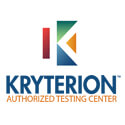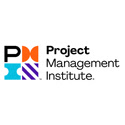Certified Information Systems Security Professional (CISSP)
About This Course
International Information System Security Certification Consortium or (ISC)² is one of the pioneers in providing information security certifications. The consortium is dedicated in aiding IT professionals learn and grow vocationally in the IT landscape. More than 130,000 certifications handed out until now, (ISC)² intends to authorize professionals in every facet of information and network security.
CISSP or The Certified Information Systems Security Professional certificate is regarded as the industry standard in the information security ecosystem. The certification program helps you become an expert in information assurance, who is skilled enough to define each aspect of information security including controls, management, design and architecture. The course serves as a steppingstone for a number of professionals in the field of IT security.
The CISSP certification not only reflects a validation of excellence, but is also a globally acclaimed and accepted authentication for IT security. Tech-Act offers a comprehensive CISSP coursework for all the professionals, who aspire to gain the knowledge to design, manage, architect and control enterprise IT security. CISSP certified professionals are in great demand by businesses worldwide when it comes to dealing with cyberattacks and security threats.
Who Should Attend This Course
CISSP is a globally accepted certification and is perfect for:
- Network architects
- Chief information security professionals
- Security and systems engineers
- IT managers/directors
- Security architects/auditors
- Security managers/consultants
Why This Course
CISSP certification program reflects a proof of excellence and is a globally accepted when it comes to IT security. The comprehensive coursework is excellent for the ones, who wish to learn and hone the knowledge to manage, design, control and architect enterprise IT security systems. Most importantly, CISSP certified experts are in huge demand by organizations across the globe in order to tackle the menace of security threats and various cyberattacks.
Here’s why:
- Globally recognized
- Validates a person’s skillsets in understanding all aspects of information security
- Operational security and recovery concepts
- Membership access to the International Information Systems Security Certification Consortium.
- Compliance requisites
- Planning a secure IT infra and environment
- Learn to safeguard resources utilizing access controls and cryptography
- Improved job prospects in IT security domain
Did you know that CISSP certified professionals earn an average salary of around $121,923 / annum. (Source: itcareerfinder.com)
Course Objectives
Tech-Act’s CISSP certification program is designed keeping in mind (ISC)² CBK 2015 exam requirements. The program helps you learn industry best IT security practices. It lets you develop skills to design, build and maintain a secure enterprise IT network using globally accepted and industry standard information security concepts.
Upon completing the course, you will:
- Learn relevant and industry specific skills to pass the CISSP exam
- Be trained to design, manage and build secure enterprise IT environment.
Course Prerequisites
The CISSP certification training is aimed at professionals, who desire to gain a competitive edge in the information security domain. (ISC)² recommends having a least of 5-years of professional experience in two or more of the eight domains of CBK 2015.
You can earn a one-year waiver with a four-year college degree or equivalent.
Course Benefits
Key benefits of CISSP include:
- Validates a person’s skillsets in understanding all aspects of information security
- Globally recognized
- Improved job prospects in IT security domain
- Membership access to the International Information Systems Security Certification Consortium.
- Learn to safeguard resources utilizing access controls and cryptography
- Planning a secure IT infra and environment
- Compliance requisites
- Operational security and recovery concepts





























